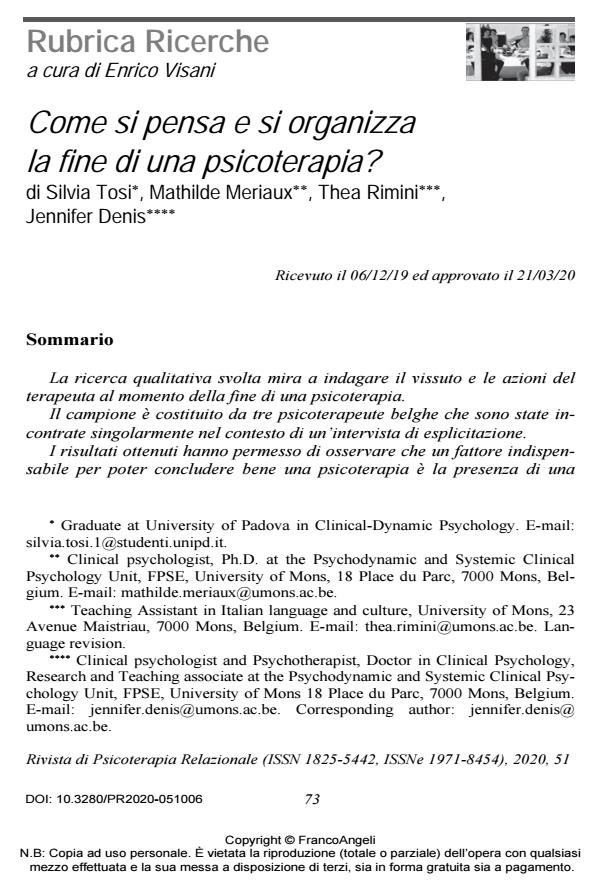How to think and to organise the end of a psychotherapy?
Journal title RIVISTA DI PSICOTERAPIA RELAZIONALE
Author/s Silvia Tosi, Mathilde Meriaux, Thea Rimini, Jennifer Denis
Publishing Year 2020 Issue 2020/51
Language Italian Pages 27 P. 73-99 File size 307 KB
DOI 10.3280/PR2020-051006
DOI is like a bar code for intellectual property: to have more infomation
click here
Below, you can see the article first page
If you want to buy this article in PDF format, you can do it, following the instructions to buy download credits

FrancoAngeli is member of Publishers International Linking Association, Inc (PILA), a not-for-profit association which run the CrossRef service enabling links to and from online scholarly content.
This qualitative research analyses the therapist’s thoughts and ac-tions at the end of a psychotherapeutic process. The sample is composed of three Belgian psychotherapists encoun-tered individually in the context of an explicitation interview. The results have allowed to observe that a good therapeutic alli-ance is important to conclude the psychotherapy in a good way. Moreover, the authors observed that the therapists co-created with their respective patients the end of the psychotherapy, and this helped during the separation process. The authors could observe that the end of a psychotherapy is a cru-cial moment during the clinical process. In addition, if the ending is planned and elaborated in advance, the patient may have the oppor-tunity to live this moment as an opening to new possibilities and experiences.
Keywords: End of psychotherapy, psychotherapy, explicitation inter-view, reflexivity and clinical reasoning.
Silvia Tosi, Mathilde Meriaux, Thea Rimini, Jennifer Denis, Come si pensa e si organizza la fine di una psicoterapia? in "RIVISTA DI PSICOTERAPIA RELAZIONALE " 51/2020, pp 73-99, DOI: 10.3280/PR2020-051006